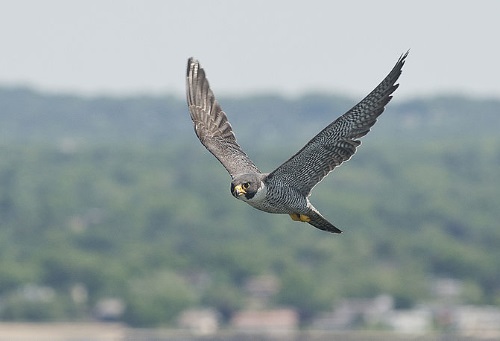The Migratory Bird Treaty Act of 1918 or MBTA – which guides the evaluation of bird nesting areas and flight paths in order to avoid “taking” of the creature’s lives unnecessarily – may change due to a notice of proposed rulemaking originally issued January 30 by the U.S. Fish and Wildlife Service (FWS), with its comment period set to end on July 20.
That proposed rulemaking would codify the Department of the Interior’s existing interpretation that MBTA only applies to actions “directed at” migratory birds, their nests, or their eggs and would not apply to any incidental killing of birds due to commercial activity.
This action may also change the way state of departments or transportation have traditionally dealt with migratory bird regulations and would also prevent them from being fined for accidentally killing birds such as geese, herons, ducks, and other migratory species.
Migratory birds are frequently killed by industrial construction activities and accidents such as oil spills or collisions with aircraft, such as the 2009 commercial jetliner crash-landing on the Hudson River after the plane collided with geese and lost all engine power.
Migratory birds also often make their homes in highway structures or nest in areas where construction is planned and as a result, over the past decade, the MBTA’s prohibitions have been an increasing target of litigation. In enforcing the MBTA, the federal government has typically relied on its discretion and FWS guidelines that recommend best practices for certain industries. State DOTs use those recommendations along with state-specific regulations to develop their own bird mitigation efforts where transportation construction is concerned.

However, under the current proposed rule, those efforts will become largely voluntary and could result in mitigation efforts being decreased in order to save on overall construction costs.
The move toward this proposed rule started on January 10, 2017 when a legal opinion – M-37041, Incidental Take Prohibited Under the Migratory Bird Treaty Act – interpreted the MBTA’s prohibitions and penalties as applying regardless of a violator’s intention. Under that interpretation, any act that takes or kills a migratory bird is within the scope of the MBTA prohibitions so long as the act resulted in the death of a bird.
Yet on February 6, 2017, the M-37041 ruling was suspended for further review and then withdrawn and replaced on December 22, 2017, by the issuance of M-37050, The Migratory Bird Treaty Act Does Not Prohibit Incidental Take.
That ruling’s conclusion is an otherwise lawful activity that results in an incidental take of a protected bird does not violate the MBTA. And it is that 2017 legal ruling that the FWS’s current proposed rule would codify as a way to provide state agencies and construction companies with “legal certainty” so that they would not be fined for incidental taking of migratory birds.
Conservationists have proposed a different direction, describing instead a migratory bird incidental take permitting system in the Migratory Bird Protection Act (H.R. 5552), or MBPA, introduced on January 8, 2020, with agreed-upon best management practices providing the basis for a permit.
The Federal Highway Administration uses a similar permit system in order to work with swallow populations in construction and inspection. The Section 1439 of the Fixing America’s Surface Transportation or FAST Act authorizes the temporary take of nesting swallows that is otherwise prohibited under the MBTA.
Under the FHWA’s permitting system, the entity undertaking a bridge construction project must submit a document that contains the practicable measures to minimize significant adverse effects on nesting swallows. But those measures can often be time consuming, costly, and include timing bridge construction activities to avoid bird nesting season as well as moving and restoring nesting areas that are near the work area or constructing temporary alternative nesting areas in the vicinity of the bridge.
How are state DOTs responding to such changes in migratory bird protection rules? We’ll examine that in part 2 of this story next week.




